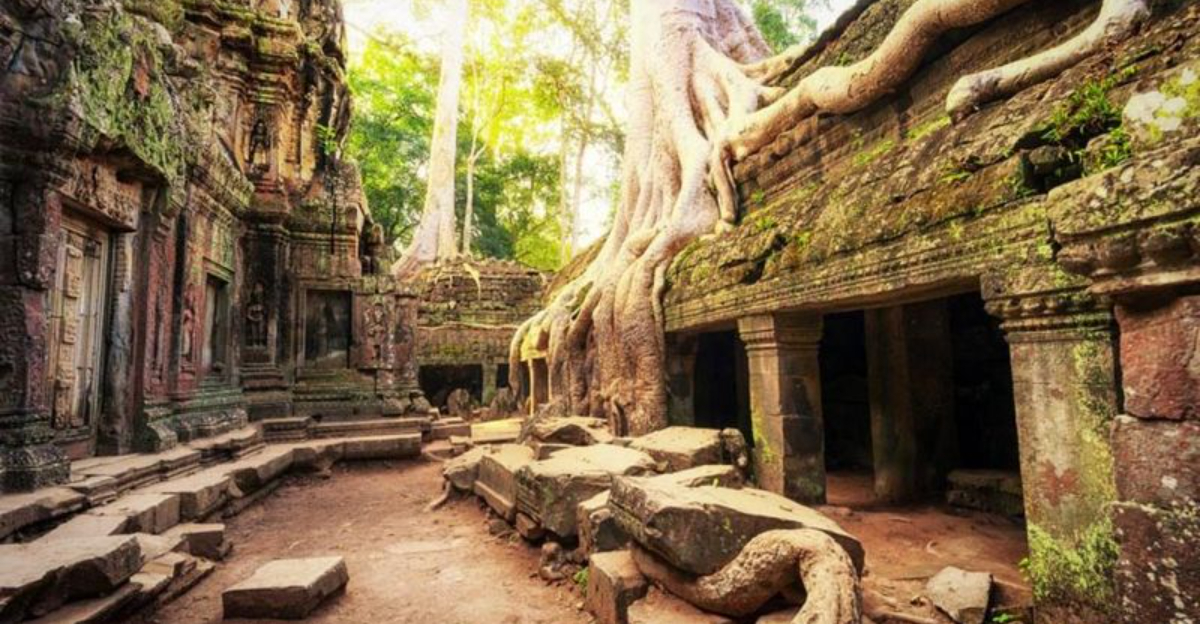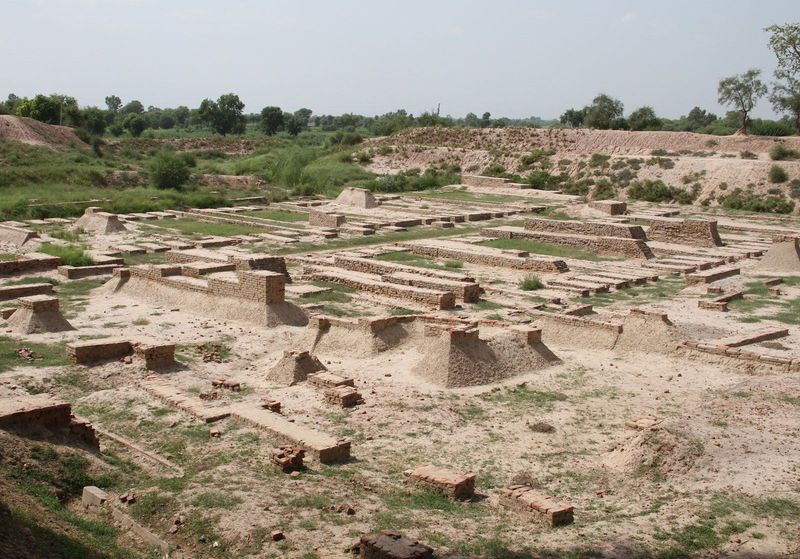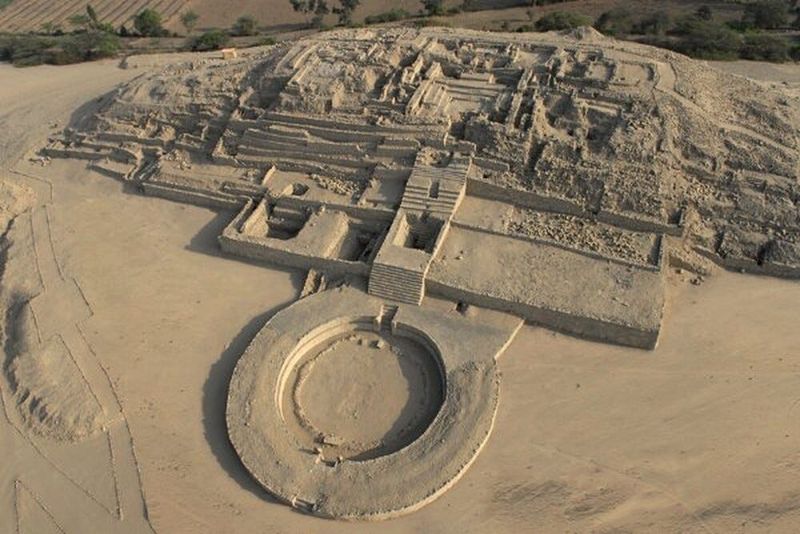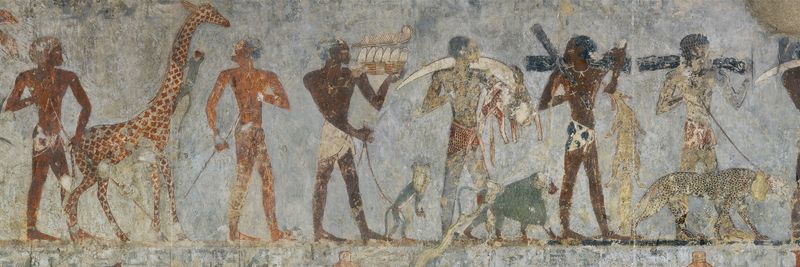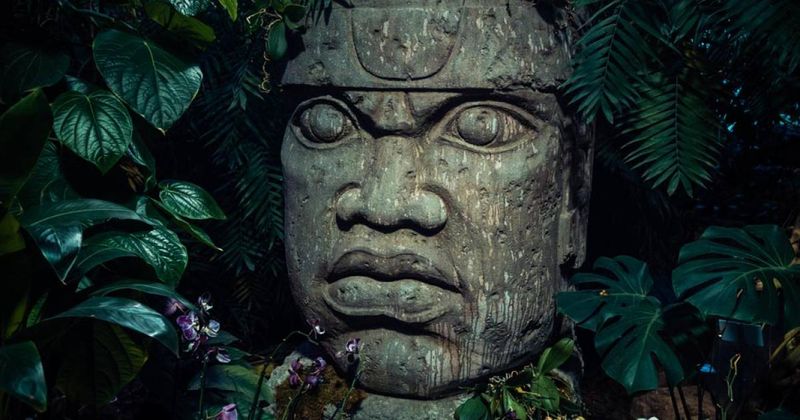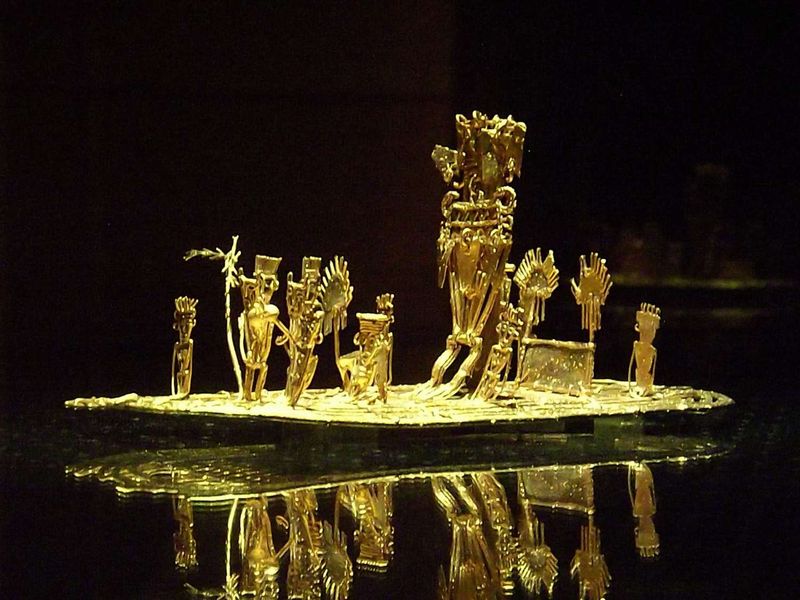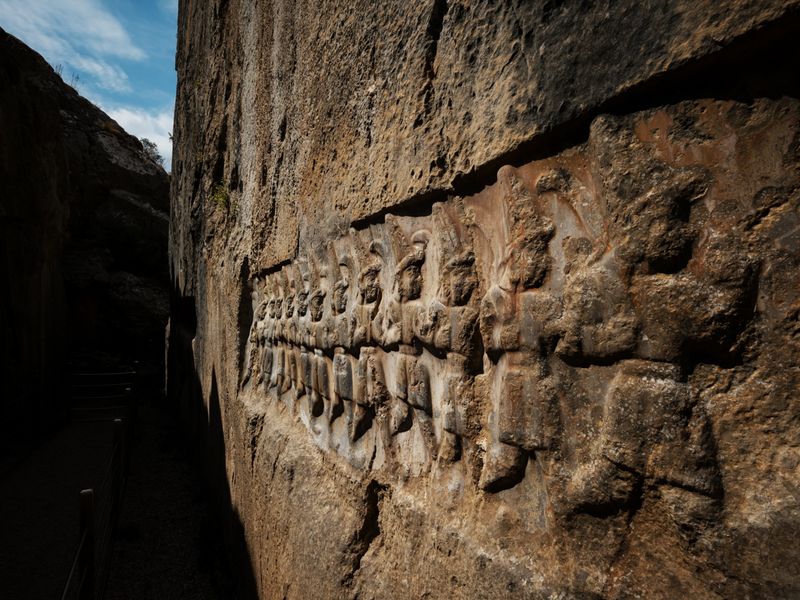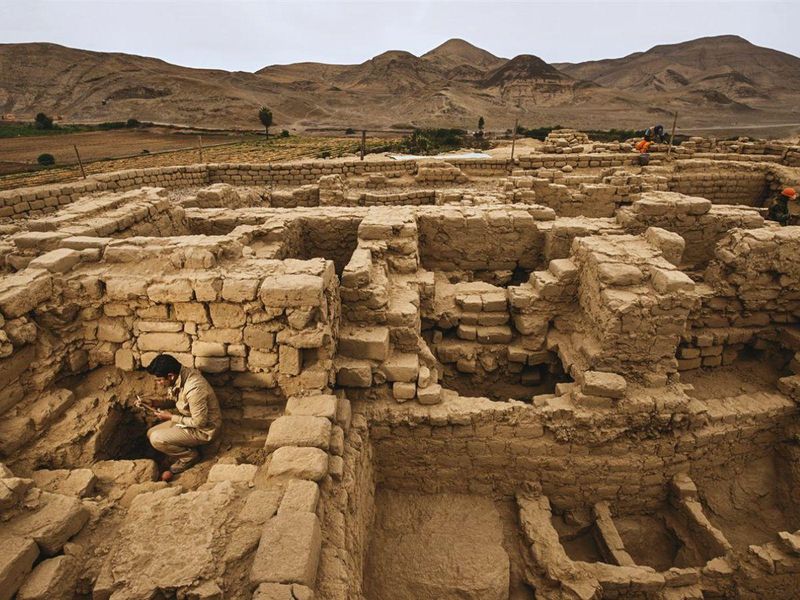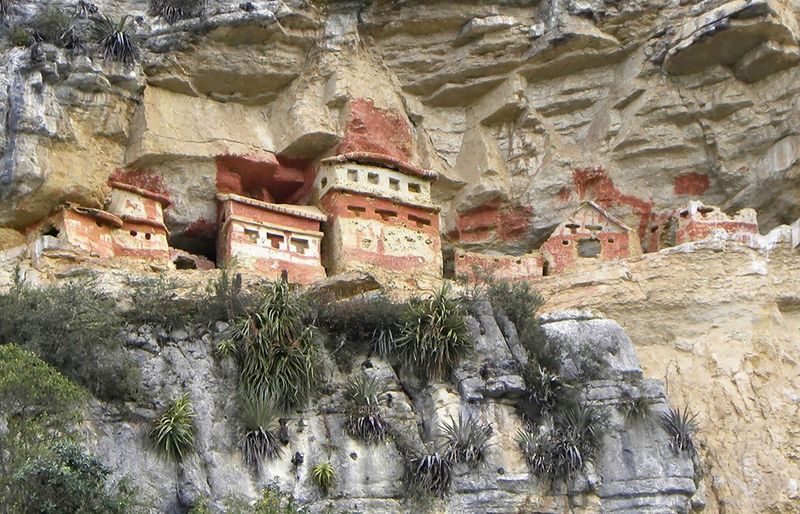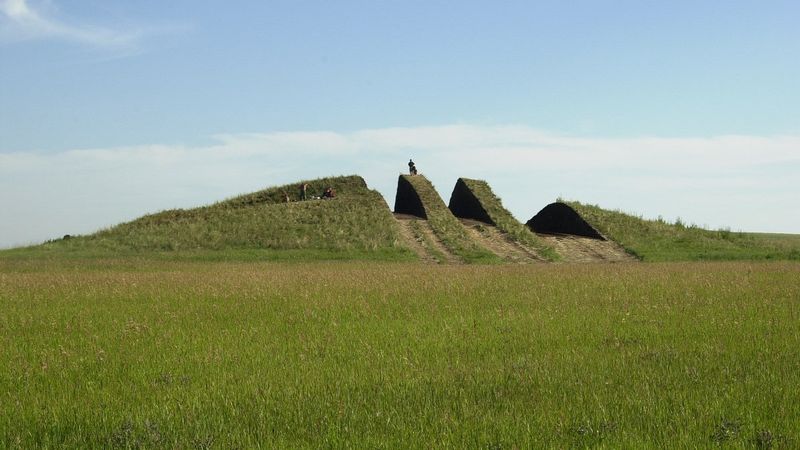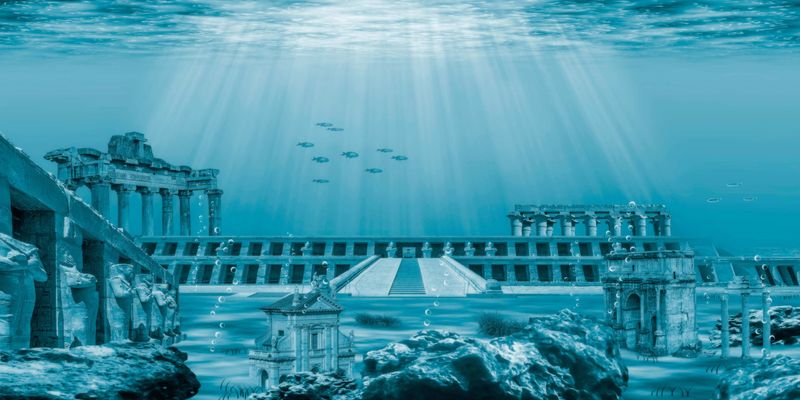The earth holds secrets older than history itself — empires swallowed by jungle, cities drowned beneath waves, and societies that vanished without a trace. While some were partially uncovered, others remain buried, waiting to rewrite what we think we know. Here are 20 lost civilizations that just might still be hidden beneath our feet.
1. The Indus Valley Civilization
The Indus Valley Civilization, known for its advanced urban planning and architecture, was a beacon of early civilization in South Asia. Despite being one of the world’s earliest urban cultures, much of its vast expanse remains unexcavated beneath the bustling cities of Pakistan and India.
Yet, the absence of decipherable written records leaves its social and political structures cloaked in mystery.
Today, the potential for discovery beneath the modern landscape is tantalizing.
2. The Kingdom of Aksum
The Kingdom of Aksum, a major trading empire in ancient Africa, was renowned for its giant obelisks and monumental stelae. This civilization thrived as a cultural and economic hub, connecting the Roman Empire and ancient India through trade.
While some parts of Aksum have been explored, vast areas remain untouched, potentially holding secrets of past grandeur.
The remnants of this once-great kingdom offer a glimpse into a powerful society whose full story is yet to be told, hidden beneath the Ethiopian highlands.
3. The Norte Chico Civilization
Older than the Egyptian pyramids, the Norte Chico Civilization thrived along the coastal plains of Peru. Its ancient cities, characterized by large platform mounds and sunken plazas, suggest a complex society rooted in ceremonial life.
Despite their age, these sites remain largely unexplored, leaving many questions about this civilization’s everyday life unanswered.
Buried under layers of sand, the potential for new revelations about human development in the Andean region is immense.
4. The Land of Punt
The Land of Punt, often mentioned in ancient Egyptian texts, remains an enigma due to its uncertain location. Described as a land rich in resources like gold, ebony, and incense, Punt was a key trading partner to the Egyptians.
Despite extensive references, its exact whereabouts continue to baffle historians, fueling legends and speculation about its influence and reach.
The mystery of Punt endures, with possibilities stretching from the Horn of Africa to the Arabian Peninsula, waiting for evidence to surface.
5. The Tartessians
The Tartessians, a wealthy and semi-mythical culture located at the edge of the Iberian Peninsula, are often linked with the legend of Atlantis. Known for their metalwork and trade, they were said to possess great riches and a flourishing society.
Despite historical mentions by Greek and Roman writers, much of Tartessos remains unconfirmed, hidden under layers of Spanish soil.
The allure of discovering tangible evidence of this mysterious civilization continues to captivate archaeologists and historians alike.
6. The Olmecs
The Olmecs, known for their massive stone heads and rich ceremonial life, were once the precursors to later Mesoamerican cultures. Flourishing in what is now southern Mexico, their influence spread over vast regions through trade and cultural exchange.
Much of their cities and ceremonial centers remain engulfed by dense jungle, concealing their contributions to early Mesoamerican development.
As more sites are uncovered, each find unravels a deeper understanding of their role as a cultural cornerstone in the Americas.
7. The Mississippian Culture
The Mississippian Culture, known for constructing massive earthen mounds, flourished across what is now the southeastern United States. These mounds served as ceremonial and political centers, reflecting a complex society with advanced agricultural practices.
Many of their ancient cities remain buried beneath modern landscapes, waiting to reveal the secrets of an influential pre-Columbian society.
With ongoing archaeological efforts, the potential to uncover more about their life, trade networks, and societal structure is vast.
8. The Sanxingdui Civilization
The Sanxingdui Civilization, discovered in Sichuan, China, is renowned for its unique bronze artifacts and masks, which depict a culture distinct from other ancient Chinese societies.
New findings suggest that much of Sanxingdui’s history is still concealed beneath layers of earth, with mysteries about its rise and fall yet to be unraveled.
The allure of discovering more about this enigmatic civilization continues to drive archaeological expeditions, promising insights into an unconventional cultural heritage.
9. The Nabataeans
The Nabataeans, the creators of the famous city of Petra, were once a dominant trading power in the Arabian Peninsula. Known for their architectural genius, they carved cities into rock and managed vast trade networks.
While Petra is well-known, archaeologists believe much of the Nabataean empire remains hidden beneath the desert sands, offering potential discoveries of their sophisticated civilization.
These unexplored areas may hold keys to understanding their economic prowess and cultural influence in the ancient world.
10. The Muisca Confederation
The Muisca Confederation, famed for its association with the El Dorado legend, was a complex society in the Andes of Colombia. Known for their gold craftsmanship, the Muisca developed an intricate system of trade and politics.
Despite their historical significance, much of their legacy remains buried, with potential discoveries awaited in the mountainous terrain.
Archaeological efforts continue to unveil the extent of their influence and the enigmatic allure of their legendary riches.
11. The Khmer Empire
The Khmer Empire, renowned for the architectural marvel of Angkor Wat, was once a dominant force in Southeast Asia. Recent LiDAR technology has unveiled vast urban landscapes hidden beneath Cambodia’s dense jungle, suggesting a more extensive civilization.
These discoveries indicate sophisticated city planning and water management systems that challenge previous historical assumptions.
The hidden cities of the Khmer Empire continue to offer a glimpse into an advanced society whose reach and influence were far greater than once believed.
12. The Hittites
The Hittites, masters of diplomacy and ironworking, were a dominant power in ancient Anatolia. Known for their military prowess and extensive archives, much of their history remains buried beneath modern Turkey.
Archaeologists suspect that untapped sites and undiscovered tablets could provide deeper insights into their complex society and interactions with neighboring civilizations.
The potential for new findings continues to intrigue historians seeking to piece together the broader narrative of the ancient Near East.
13. The Garamantes
The Garamantes, a sophisticated civilization in the heart of the Sahara, developed advanced irrigation techniques to sustain their desert empire. Their underground water channels and urban centers once supported a thriving society.
Despite this ingenuity, much of their history remains unexplored, buried under shifting sand dunes.
Ongoing research seeks to uncover their contributions to human adaptation and survival in extreme environments, shedding light on a civilization that defied the harshest conditions.
14. The Mycenaeans
The Mycenaeans, immortalized in Homer’s epics, were known for their palatial centers and warrior culture. This civilization laid the foundation for classical Greek society.
Though some sites have been unearthed, entire cities may still lie hidden beneath Greece’s rugged terrain, waiting to reveal stories of grandeur and conquest.
Continued exploration promises to enhance our understanding of their impact on the Mediterranean world and connections with other ancient civilizations.
15. The D’mt Kingdom
The D’mt Kingdom, preceding the well-known Aksumite Empire, remains largely mysterious. Located in what is now Eritrea, this kingdom laid the groundwork for future regional power.
Ruins and artifacts are just beginning to hint at the kingdom’s scope and influence, offering a tantalizing glimpse into an era of emerging trade and cultural development.
Further excavation could uncover more about this enigmatic civilization and its role in shaping the history of the Horn of Africa.
16. The Wari Empire
The Wari Empire, predecessors to the Incas, developed advanced political systems and extensive road networks. Their influence stretched across the Andean region, marked by architectural innovations and urban planning.
Despite their significance, much of their legacy remains undiscovered, with political centers hidden beneath the Peruvian landscape.
Archaeologists continue to explore these areas, seeking to understand the complexities of Wari society and their contributions to Andean civilization.
17. The Lycians
The Lycians, known for their cliffside tombs, inhabited the southwestern coast of modern-day Turkey. Their unique funerary architecture and culture distinguished them from their neighbors.
While their tombs are well-documented, much of their written language and urban settlements remain undeciphered and unexplored.
Ongoing efforts aim to unravel the secrets of Lycian society, offering insights into their interactions with other ancient Mediterranean cultures.
18. The Chachapoya
The Chachapoya, known as the “Cloud People,” thrived in the cloud forests of present-day Peru. Their cliffside dwellings and fortresses demonstrate a society well-adapted to rugged terrains.
Recent discoveries have begun to unveil the extent of their settlements, although much remains hidden within the dense Andean wilderness.
Further exploration promises to reveal more about their cultural practices, social organization, and resilience in challenging environments.
19. The Scythians
The Scythians, a nomadic warrior culture, dominated the Eurasian steppe with their cavalry and craftsmanship. Known for their gold-filled burial mounds, they left behind a legacy of art and warfare.
Many of these kurgans remain untouched, buried under the vast expanses of the steppe, holding potential treasures and historical insights.
Archaeological pursuits continue to seek out these ancient sites, aiming to shed light on the Scythians’ role in shaping early Eurasian history.
20. Atlantis
Atlantis, the most debated of lost civilizations, continues to intrigue scholars and adventurers alike. Described by Plato as a powerful and advanced society, its exact location remains a subject of speculation and myth.
Whether real or allegorical, the search for Atlantis fuels the imagination, prompting explorations across the globe in hopes of uncovering evidence of its existence.
This legendary civilization embodies the ultimate mystery, challenging our understanding of history and the boundaries between fact and fiction.
